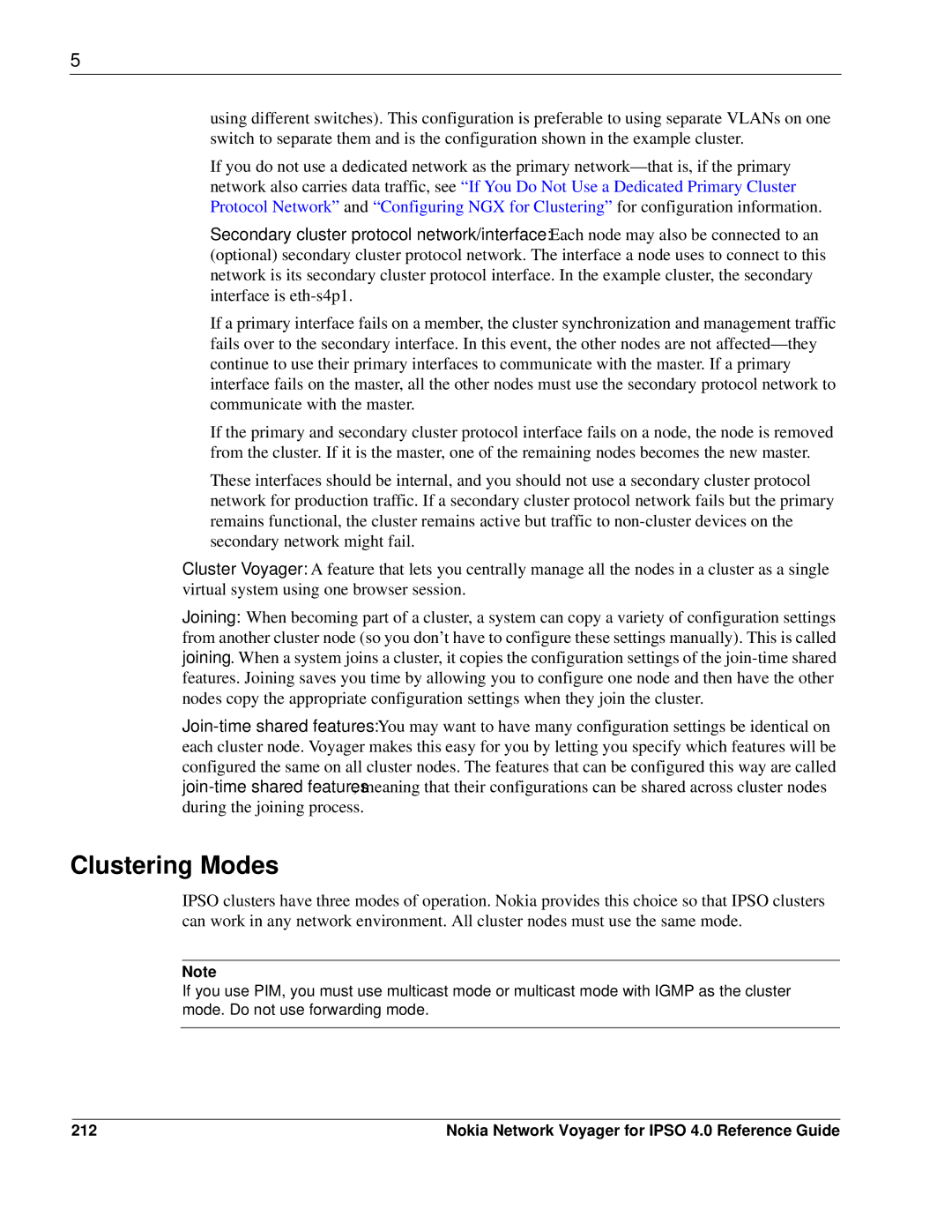
5
using different switches). This configuration is preferable to using separate VLANs on one switch to separate them and is the configuration shown in the example cluster.
If you do not use a dedicated network as the primary
Secondary cluster protocol network/interface: Each node may also be connected to an (optional) secondary cluster protocol network. The interface a node uses to connect to this network is its secondary cluster protocol interface. In the example cluster, the secondary interface is
If a primary interface fails on a member, the cluster synchronization and management traffic fails over to the secondary interface. In this event, the other nodes are not
If the primary and secondary cluster protocol interface fails on a node, the node is removed from the cluster. If it is the master, one of the remaining nodes becomes the new master.
These interfaces should be internal, and you should not use a secondary cluster protocol network for production traffic. If a secondary cluster protocol network fails but the primary remains functional, the cluster remains active but traffic to
Cluster Voyager: A feature that lets you centrally manage all the nodes in a cluster as a single virtual system using one browser session.
Joining: When becoming part of a cluster, a system can copy a variety of configuration settings from another cluster node (so you don’t have to configure these settings manually). This is called joining. When a system joins a cluster, it copies the configuration settings of the
Clustering Modes
IPSO clusters have three modes of operation. Nokia provides this choice so that IPSO clusters can work in any network environment. All cluster nodes must use the same mode.
Note
If you use PIM, you must use multicast mode or multicast mode with IGMP as the cluster mode. Do not use forwarding mode.
212 | Nokia Network Voyager for IPSO 4.0 Reference Guide |
